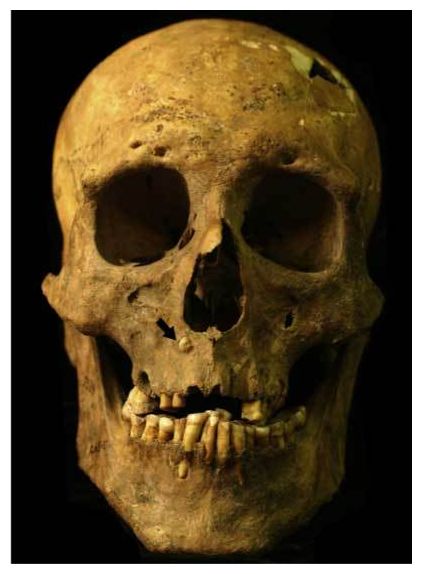
© Eric Bartelink/Phoebe Hearst MuseumThe skull of the man found in the site known as Burial 37 bears the distinct marks of acromegaly, new research finds. The black arrow indicates where the man’s right eye tooth erupted just below his nose.
The remains of a man buried 3,800 years ago in a richly decorated California grave bear some unusual but unmistakable features - a protruding brow, a lantern jaw, thick leg and arm bones, and teeth so crowded together that at one point they erupt in rows three deep.
According to a new study of the ancient skeleton, they are signs of acromegaly, a rare disorder of the endocrine system that's similar to gigantism.
The California man is among the very few examples of acromegaly ever found in the archaeological record, and it's the oldest ever identified, according to Dr. Eric Bartelink, a physical anthropologist at California State University, Chico.
"It is the earliest evidence of this condition in humans, the only documented case from prehistoric California, [and] one of the more complete skeletons documented with this condition," he said in an interview.
Acromegaly has only been identified definitively at two other archaeological sites in North America, Bartelink said: in the remains of a male buried in New Mexico about 600 years ago, and an unsexed 1,100-year-old skull found in Illinois.
The newly found case in California adds to the scant literature of the disorder, he said, potentially improving how acromegaly may be diagnosed in other remains, and also shedding light on the history of the disease, perhaps even how it was interpreted in the ancient past.
The man, believed to have been in his mid-30s at the time of his death, was found in a burial mound with 176 other bodies near the Central Valley town of Elk Grove.
Labeled as Burial 37, the grave was originally excavated in the 1930s and dated to 3,750 to 3,950 years old.
The man was part of a hunter-gatherer culture known as the Windmiller, one of the earliest sedentary societies in the Central Valley, usually identified by its distinct burial practices, Bartelink said.
Windmillers typically buried their dead laying flat and face-down, rather than in a flexed position, with the heads pointing west. The deceased were also often sent off with a fine complement of grave goods, Bartelink said.
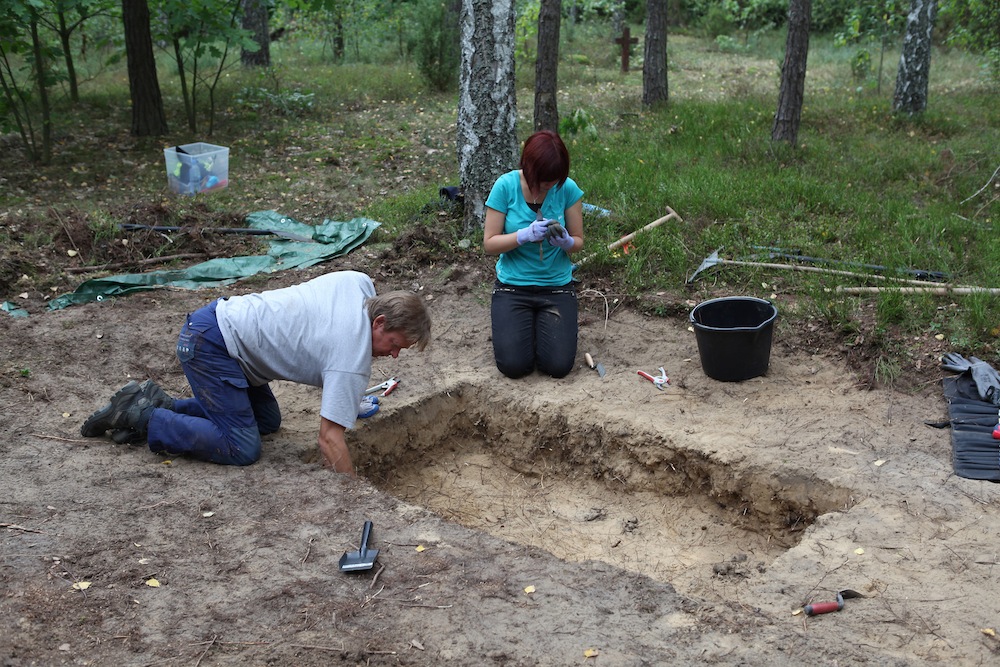
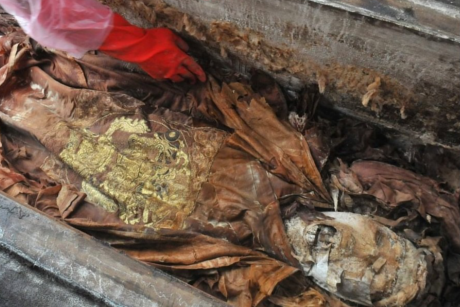

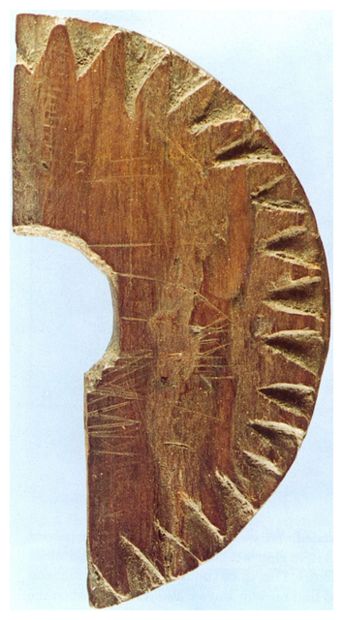

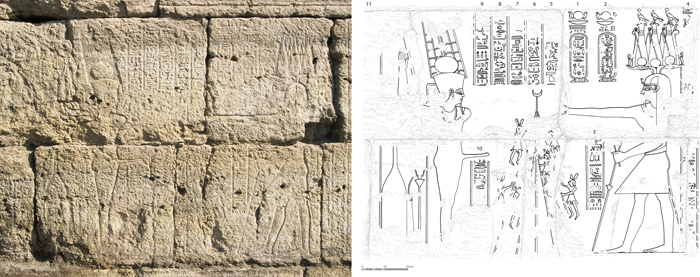
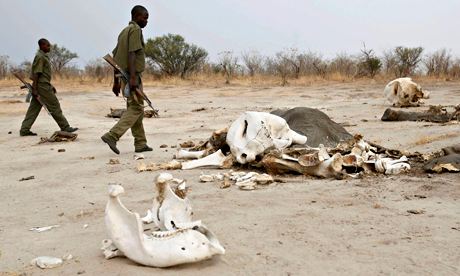

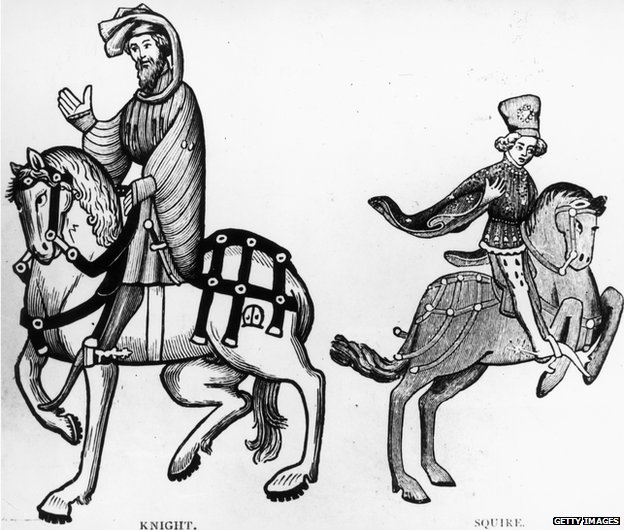




Comment: One of our research forum members decided to look into this story; the following are his results and conclusions:
Reasons for questioning the validity of the article in chronological order:
1. No other sources
I did a search to try to find a Hungarian source to back this up, as if this investigation was actually taking place currently and taken as seriously as the article suggests, than it would be all over the Hungarian media. I couldn't find a single source. There have been many claims in the past that they have found Attila the Hun's grave in the past - the last one being in 2012 - but none of them in Budapest.
2. No bridges over the Danube are currently being built or planned to be built in Budapest.
The last bridge that was built in Budapest was in 2008
The last one that was built on the Danube south of Budapest was in 2007. The next one that they're planning on building is slated to start next year. This will also be outside Budapest, in Komarom.
3. No historian is at the Lorand Eotvos University of Budapest (ELTE) by the name of Albrecht Rümschtein.
Link to a list of the Historian faculty members HERE
His name was also a red flag as there's nothing Hungarian about it (though there are instances when this happens) but since I later found out that he doesn't exist, it fits.
4. The original posting website carries some rather questionable other news.
For example if we go to the Politics section, we'll find THIS
Which seems to be something totally made up about the uproar in India because of a new Oliver Stone movie that depicts Gandhi as the Indian Rambo.
Other headlines in the same section include:
- India: Gandhi's Loincloth Sold 85M$ at Auction link
- Last Active Unit of French Resistance Finally Surrenders Weapons link
- Ireland: Man Accused of Stealing Roads Finally Arrested link
- Missouri Squirrels Demand Right to Unionize link
- OBAMA: "School Crossing Guards Should Be Sexier" link
- New Right-Wing Party Triumphs in Legoland Elections link
With these in mind, I think it's pretty safe to say this worldnewsdailyreport is a satire 'news' website, similar to The Onion and not a real news site.